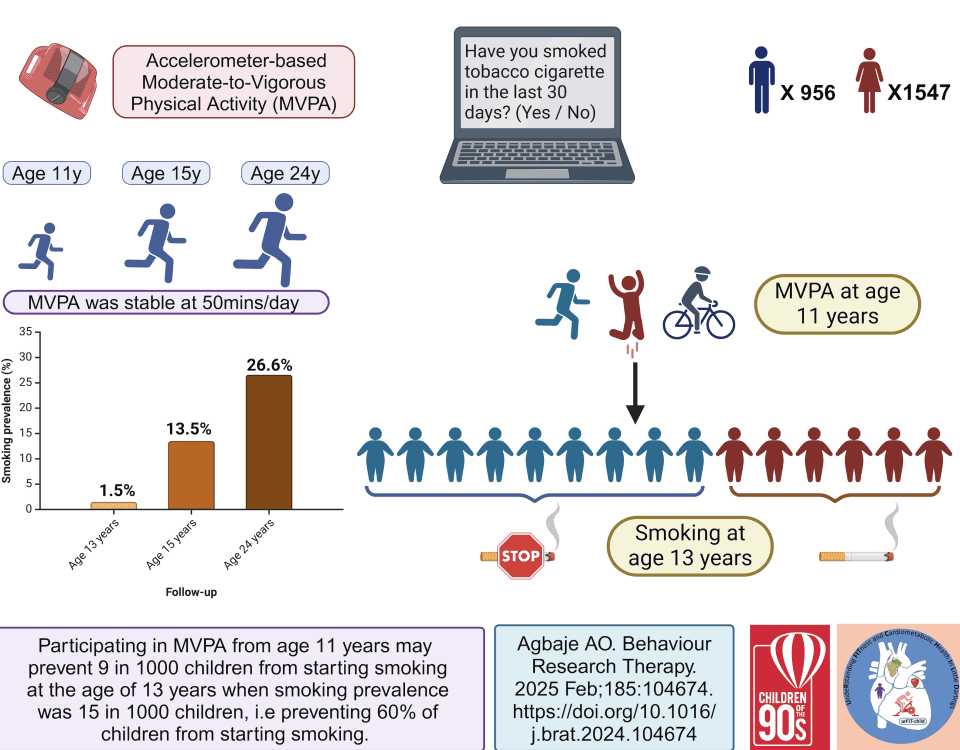
Comparison of Sedentary Time Between Thigh-Worn and Wrist-Worn Accelerometers
September 10, 2020
Feasibility of Measuring Sedentary Time Using Data From a Thigh-Worn Accelerometer: The 1970 British Cohort Study
September 17, 2020Thank you to Matthew Mclaughlin (University of Newcastle and Hunter New England Population Health) for providing this blog post to SBRN. The post is summarizing a recent paper titled “Worldwide surveillance of self-reported sitting time: a scoping review” that was just published in the International Journal of Behavioral Nutrition and Physical Activity (available here, open access). The following summary is reposted from GrowKudos.com (original post https://www.growkudos.com/publications/10.1186%25252Fs12966-020-01008-4/reader).
What is it about?
We used extensive methods to search for all countries around the world that have collected population level sitting time data in the last 10 years. We focused on data collected using a single question in a survey. We then looked at how long they reported sitting and which specific tool they used. We found that less than a third of all countries reported sitting time. These countries represented about half of the global adult population. The majority of data were from middle- and high-income countries. Higher-income countries reported higher sitting times than middle- and low-income countries. For example, low-income countries typically reported less than 3 hours a day of sitting time compared to around 5 hours per day for high-income countries. However, we know that self-reporting of daily sitting time is prone to error, therefore these estimates should be viewed cautiously.
Why is it important?
Too much sitting may be a risk factor for early death and chronic disease, such as diabetes and heart disease. Globally only 29% of countries have collected data on adults sitting time in the last 10 years. In contrast, the majority of countries routinely collect data on physical activity and other health behaviours (e.g. smoking). Monitoring of disease risk factors is an important step to inform action and evaluate policy. Therefore, we need more (high quality) data on sitting time. Single-item questionnaire measurement remains the most popular method for country-level data collection, as it can be incorporated into existing surveys relatively easily. However, due to the limitations of this method, we need to consider using more robust approaches, such as monitoring devices, as well as collecting data in more countries, particularly those classed as low- or middle-income.
Perspectives
Matthew Mclaughlin
University of Newcastle and Hunter New England Population Health
Dr Jacqueline Louise Mair
University of the West of Scotland
We need good evidence from around the world to understand how much time, in average, people spend sitting. Long periods of sitting can be bad for your health so it’s important we track this. Great to see this will be added to the Country Cards so we can compare between countries around the world.
Dr Andrew J Atkin
University of East Anglia
Sedentary behaviour has emerged as a possible risk factor for chronic disease morbidity and mortality only within the last 20 or so years. Perhaps then, it’s unsurprising that relatively few countries have collected data on sitting time at population level. Yet, this data would be hugely valuable, complimenting the data we already have on levels of physical activity and serving a multitude of other purposes. A key step forward would be to implement device-based measurement in our surveillance systems; this would allow for the simultaneous assessment of both sedentary time and physical activity with less error than when measured via questionnaires
Dr Katrien Wijndaele
MRC Epidemiology Unit, University of Cambridge, UK
Sedentary behaviour and physical activity both have important roles to play in terms of public health and should be standard surveillance components. The Global Sedentary Behaviour Monitoring Initiative gives important insights in current global levels of sitting time surveillance. Future surveillance efforts could benefit from 1) inclusion of harmonised, subjective sitting time measures in regions where such measures are currently lacking, 2) as well as implementation of standardised objective measures of the entire activity spectrum. Feasibility of the latter in existing global surveillance programmes is currently being pilot-tested (https://doi.org/10.17863/CAM.56039).
Associate Professor Luke Wolfenden
This is a fantastic resource for countries to stimulate action to reduce sedentary behaviour




